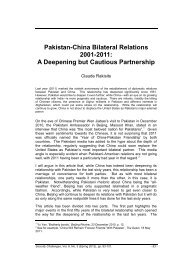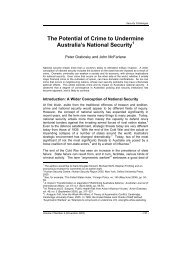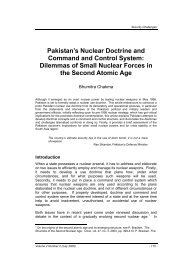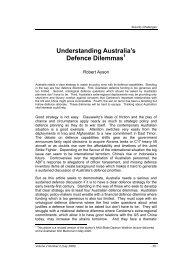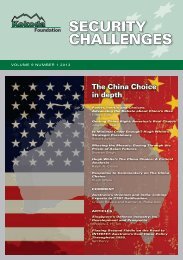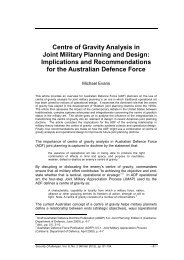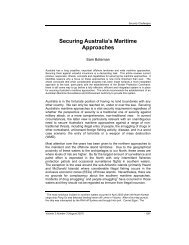The Transformation of Triad - Security Challenges
The Transformation of Triad - Security Challenges
The Transformation of Triad - Security Challenges
You also want an ePaper? Increase the reach of your titles
YUMPU automatically turns print PDFs into web optimized ePapers that Google loves.
Roderic Broadhurst and Lee King Wa<br />
(n=124) involving 504 known <strong>of</strong>fenders. 139 As, to be expected, most cases<br />
involved conflicts between groups and thus a single victim/multiple <strong>of</strong>fenders<br />
pattern 140 was the most common, although cases <strong>of</strong> multiple victims and<br />
<strong>of</strong>fenders also occurred and a few involved assassination-like murders<br />
where the number <strong>of</strong> <strong>of</strong>fenders was unknown. In the later period 1999-2005,<br />
the proportion <strong>of</strong> triad-related murders averaged less than half <strong>of</strong> that in the<br />
period 1989-1998 (4.9 percent <strong>of</strong> all homicide cases). <strong>The</strong> risk <strong>of</strong> a triad<br />
member becoming a homicide victim, although low, was estimated to be<br />
approximately 13 times greater than that <strong>of</strong> a non-triad member. 141<br />
Figure 2: Trends in the proportion <strong>of</strong> triad-related homicide victimisation in HK 1989-2005<br />
Source: HKHMDB 1989-2005 142<br />
Since 2005 homicides overall have remained low and triad-related homicides<br />
are infrequent; 143 however, to date a few cases have been reported in 2009<br />
139<br />
Lee, Broadhurst and Beh, ‘<strong>Triad</strong> Related Homicide in Hong Kong 1989-1998: A Preliminary<br />
Description’.<br />
140<br />
As few as 8.3 percent <strong>of</strong> cases were attributed to a lone <strong>of</strong>fender: Ibid., p. 272.<br />
141<br />
Ibid., p. 267, n. 15.<br />
142<br />
S. L. Beh, R. G. Broadhurst, C. Y. Chan, and K. W. Lee, ‘Lethal Violence in Hong Kong:<br />
Trends and Characteristics’, Li Ka Shing Faculty <strong>of</strong> Medicine and the Centre for Criminology,<br />
University <strong>of</strong> Hong Kong, unpublished report, December 2006. Note if events rather than victims<br />
are counted—the two arson cases in 1990 and 1997 would flatten the trend line to a<br />
consistently lower pattern for triad-related homicides (see note 118).<br />
143<br />
As few as 18 homicide cases were recorded in 2007, 35 in 2006, 34 in 2005 and 36 in 2008<br />
(HKP Annual Report, 2007); see also ‘Overall Law and Order Situation Remains Stable’,<br />
Offbeat, Issue 888 (11-24 February 2009). In 2008, no case <strong>of</strong> triad-related homicide was<br />
identified by the HKP among the 34 recorded to the end <strong>of</strong> October 2008; P. So, ‘Rise in Murder<br />
Rate Played Down’, South China Morning Post, 21 November 2008, p. 3.<br />
- 22 - <strong>Security</strong> <strong>Challenges</strong>



